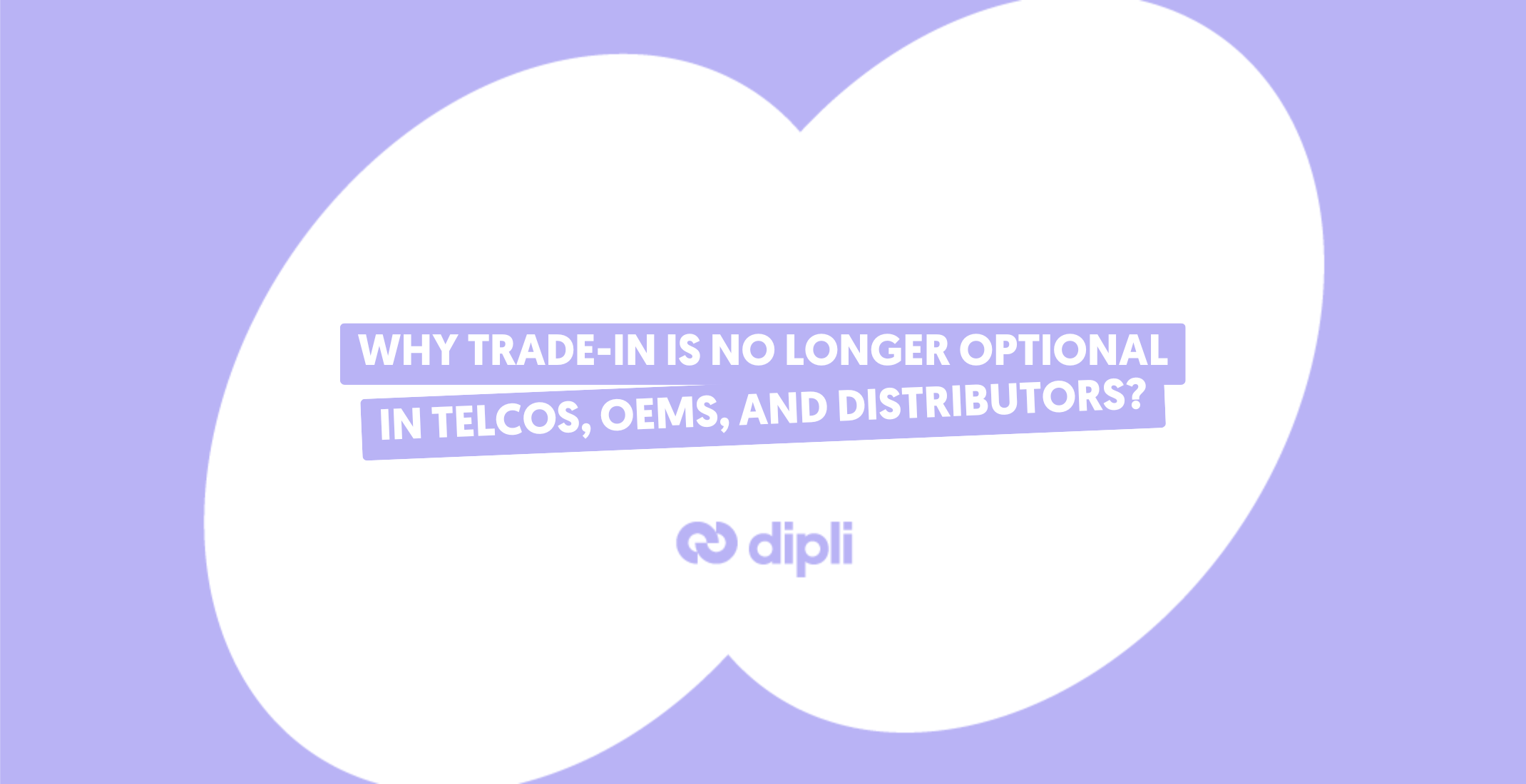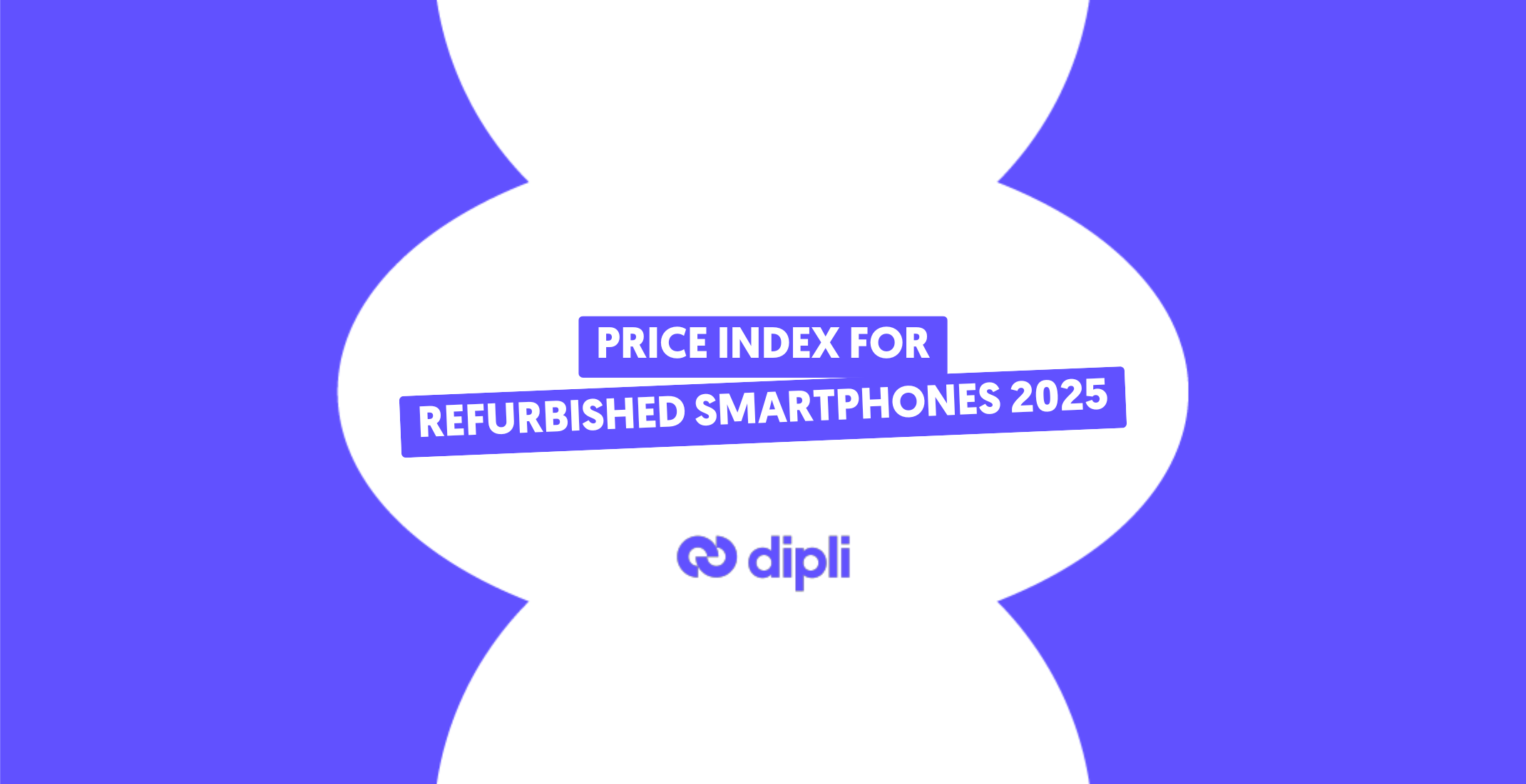From optional to a must-have: the rise of trade-in as a strategic lever
13/06/2025
0 comments

For many telcos, OEMs, and retailers, launching a trade-in program still feels like a pharaonic project: complex, costly, and challenging to integrate into existing systems.
“We know how to sell, not how to buy” is a phrase heard too often behind the scenes. Yet in 2025, holding back is no longer an option.
Trade-in has evolved from a marketing gimmick to a strategic tool that fuels growth, unlocks purchasing power, and lays the foundation for a truly circular economy. And at the heart of this shift lies the rise of the refurbished smartphone, a product that customers increasingly demand and businesses can no longer afford to ignore.
🚀 So what’s driving this transformation, and how can you keep pace by launching your own tailored trade-in program?
Our CEO and our VP of Marketing and Strategic Partnerships dive into the 5 essential questions every company asks themselves before starting their growth metamorphosis through trade-in.
Watch the full discussion 👇
1. What are the three values of a trade-in program?
A well-executed trade-in program delivers strategic value on multiple fronts, for customers, business performance, and the planet:
- Meeting customer expectations and boosting purchasing power:
- Driving sales performance and channel value:
- Accelerating circularity and sustainable brand positioning:
Trade-in is the entry point to circular economy in the electronic sector. By recovering devices for refurbishment, telcos, OEMs and retailers reduce electronic waste and extend product lifecycles. In a world where environmental responsibility is top of mind, enabling customers to avoid producing a new device by reusing an existing one is one of the most impactful green actions, and a growing differentiator for professionals.
2. Is having the best price really the key to success?
Absolutely, and it's often underestimated.
- A key point of your competitiveness:
When buying a new device, consumers instinctively compare prices across the market. The same logic applies to trade-in: customers will benchmark the value of their old device and choose the most competitive offer. In this context, trade-in pricing becomes a crucial pillar of your overall competitiveness, not a side element.
- An overlooked competitive lever that should be treated like device pricing:
While telcos and retailers dedicate considerable time and resources to ensuring their new device prices are market-aligned at launch, they rarely apply the same rigor to trade-in offers. Yet trade-in value is just as visible, just as benchmarked, and just as decisive for customer conversion.
💡 In an ecosystem where margins are tight and differentiation is hard to achieve, neglecting trade-in pricing is no longer viable. If your offer doesn’t stand out, clients will walk away. The trade-in price isn’t just a number; it’s a headline figure that frames your brand’s value perception and can make or break a sale.
3. Where should I start my trade-in journey?
Starting a trade-in program may seem overwhelming, but the key is to begin with a simple, impactful foundation:
- Secure the most competitive trade-in prices:
As you understood, this is one of the most crucial steps from day one. Launching with weak or inconsistent pricing can immediately damage your credibility and undermine the entire program, both in perception and performance.
- Help your team recognize the power of trade-in:
Once pricing is optimized, the next step is internal alignment. Contrary to popular belief, a trade-in initiative isn’t just a sustainability or CSR project: it is also a powerful revenue driver. That's why it must be embraced by your core business teams. With proper onboarding and training, they will quickly understand that trade-in isn’t a side offer, but a lever that helps them sell more by boosting customer purchasing power.
- Give incentives to your salespeople to kick start the process:
Incentives can help kickstart adoption, but over time, trade-in becomes a self-sustaining growth lever. Staff on the ground begin to see the direct impact on basket size, accessory sales, and conversion rates. With the right tools and the right mindset, your trade-in journey can start lean and scale fast — without the pharaonic complexity.
4. How and why is trade-in completing a refurbished offer?
Trade-in and refurbished offers are two sides of the same coin, and together, they form the backbone of a circular economy for electronic devices:
- Trade-in is the first step in the refurbishment process:
Trade-in is not just a service; it’s the essential sourcing for refurbishment. Without it, there’s no source of devices to test, grade, renew, and reintroduce into the market.
- Trade-in and refurbished both unlock value within the same process:
Most people trade in their old devices for one simple reason: to get money back. Whether they are looking to reduce the cost of a new smartphone or simply cash out, it’s a matter of purchasing power. And when they buy refurbished smartphones, the motivation is often the same: to access a high-end model at a more affordable price.
- Trade-in and refurbished are also environmental choices:
Economic drivers come first. But ecological awareness follows closely behind. More and more consumers expect brands to take action, and offering both trade-in and refurbished options proves that you are not only meeting market demands, but also stepping into the circular loop with credibility and impact.
💡 In short, trade-in fuels the refurbished market, forming a circular loop. Together, they offer an experience that’s financially attractive and planet-friendly. Businesses that connect the two seamlessly will be best positioned to lead the shift toward sustainable growth.
5. What trade-in trend will emerge in the near future?
Until now, trade-in has mostly operated on a "spot" model: customers buy a new device and, at that moment, trade in their old one. It’s a model that consumers are familiar with — simple, immediate, and effective. Today, this setup is already optimized, with platforms like Dipli delivering the most competitive spot trade-in prices on the market.
🚀 The future lies in anticipation. The next big shift in trade-in is the ability to predict the future value of a device, at the time of purchase.
Imagine telling your customer not just how much they will pay for a smartphone today, but how much they can expect to recover from it in 6, 12, 24 or even 48 months. This data-driven approach transforms trade-in into a forward-looking financial tool, one that adds transparency, trust, and long-term value to the buying decision.
This evolution reshapes the customer experience, giving them more control, more confidence, and more incentive to stay within your ecosystem. For telcos, OEMs, and retailers, it's a chance to build deeper loyalty, increase retention, and design smarter lifecycle journeys.
And that’s exactly why we created DipliForward: our secured residual value upfront solution that helps businesses guarantee the best future value today, while delivering a seamless trade-in experience both in-store and online.
So, do you want to start your trade-in journey with us? Our team is available for you.
Dipli simplifies the second life of electronic products.
An all-in-one tool for distributors, leasing companies, telecom operators and companies to manage the entire value chain in one place.
The platform connects the electronics industry to secondary markets; simply and securely. Trade-in and return management, refurbishment, omni-channel purchasing and distribution: Dipli covers and simplifies all stages of the circular economy.






Comments (0)